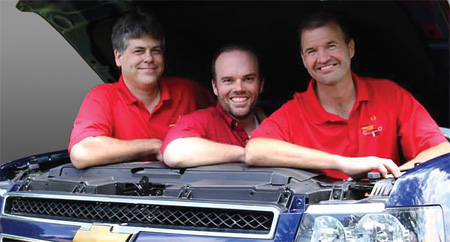Two of our most-asked questions on Under The Hood are about fuel economy and emissions. As the years have gone by, fuel economy has gone up and tailpipe emissions have gone down, and there’s a reason for it. Let’s look at two of the main controlling factors that will help explain why. CARB and CAFE are the two acronyms you need to know.
The California Air Resources Board (CARB) is the “clean air division” of the California government. It is a department within the California Environmental Protection Agency. One of the CARB goals is compliance with air pollution rules and regulations defining vehicle emissions standards. California is the only state to issue emissions standards under the Clean Air Act. Other states can choose to follow along or set their own standards. However, all states must meet the federal rules. California has a cleaner, stricter standard. All U.S. cars are either Federal or California Emission certified. You will often see California emissions certified cars sold outside of California.
The Corporate Average Fuel Economy (CAFE) standards are U.S. Regulations enacted by Congress in 1975, after the Oil Embargo of 1973 to help improve the average miles per gallon (MPG) of light trucks and cars sold in the U.S.
There are pages of documents explaining in detail the entire function of both entities, but this gives you a general idea. Both agencies combine to give us rules which make manufacturers produce cleaner, more efficient vehicles.
So, as you know, we are not politicians on Under The Hood and don’t care to be. We are, however, mechanics and have been for over 30 years so politics aside we will try to give you the lowdown on what makes fuel economy and emissions from the tailpipe change from our years of hands-on shop time.
Weight: a big factor in both fuel economy and emissions. A heavy vehicle needs more fuel to propel it down the road and burning more fuel means more emissions out the tailpipe and yes, less MPG. Manufacturers have been working hard for decades to reduce the weight of vehicles using composites and alloys and even reducing the size of wiring to lighten the load. It all adds up one piece at a time.
Powertrain design: This is a big one. Transmissions have gone from two speeds to three, four and now to eight or more in order to multiply torque and efficiency. Engines have gone from simple two-valve engines to overhead cam multivalve works of art with direct injection and highly advanced fuel trim and timing systems that can draw every bit of power out of the fuel they are delivered.
With all this advancement there is still a drawback. The fuel. Each year CARB and CAFE want manufacturers to have cleaner, more efficient vehicles, but the bar can only go so high with what is being put in the tank. Engines need more octane as the power goes up to be efficient, and the fuel must be as clean as possible to lower emissions. An engine can run much higher compression which equals more efficiency and power when it has higher octane. We have used ethanol in our own engines both on the street and ones built for performance and when used in higher blends we get the octane to give us more efficiency and a cleaner tailpipe.
We are often asked what the future of cars may be if they must be cleaner and more efficient and we just don’t know for sure, but we can say that ethanol is the best choice we see right now. That is due to its clean-burning nature, its octane rating and price. As people that have built many engines, we know that if the manufacturers had higher octane available all the time, they could produce some amazingly clean and efficient vehicles without having the cost of research and development into other alternatives.
So, what will the future look like? Time will tell, but we like fast powerful cars with that good old Detroit sound coming from under the hood and that starts with the fuel in the tank. Take care, and we’ll see you Under The Hood!
The Under The Hood radio show is America’s Favorite Car-talk show heard on over 230 stations and podcast. The Motor Medics, Russ Chris and Shannon are three great friends having fun and offering a wide range of automotive advice without the aid of in-studio computers or reference guides.







